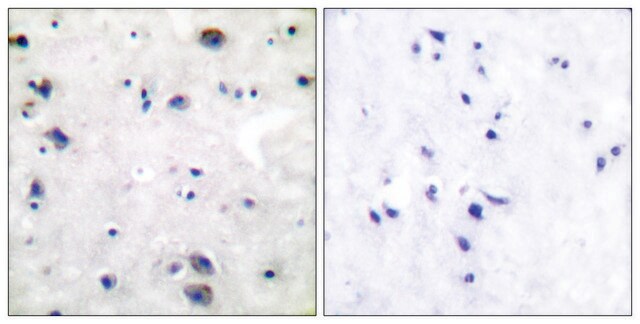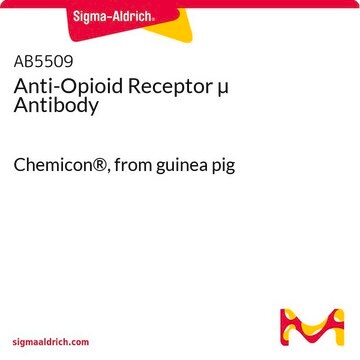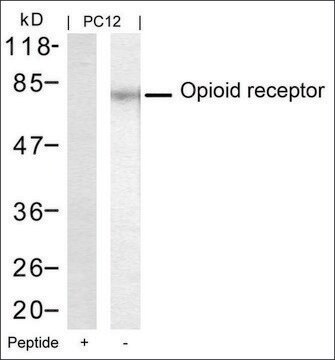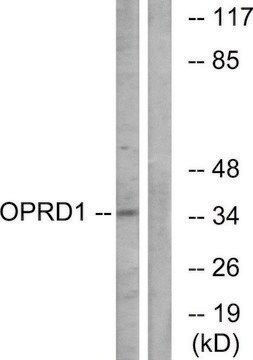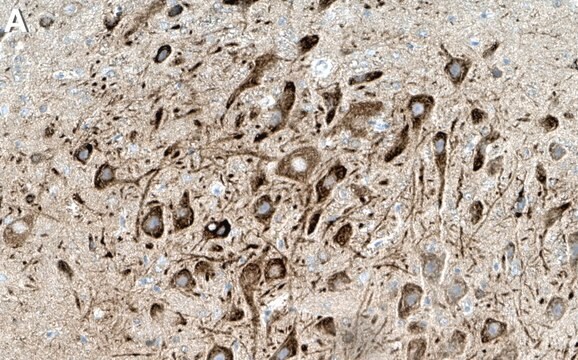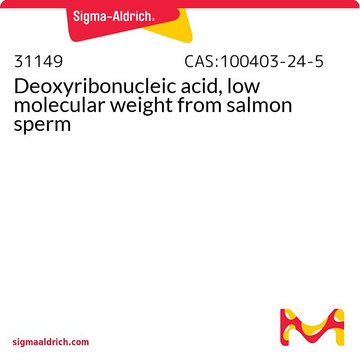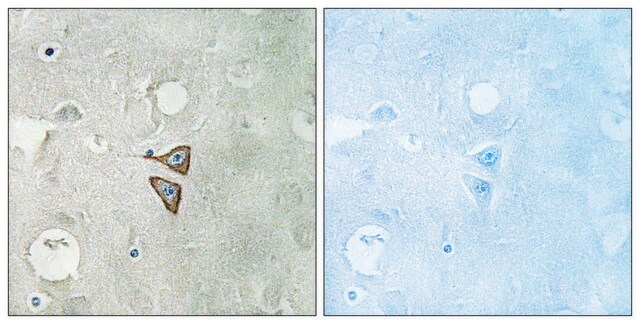AB5511
Anti-Opioid Receptor Antibody, µ, pain
serum, Chemicon®
Synonym(s):
mu opiate receptor, opioid receptor, mu 1
About This Item
Recommended Products
biological source
rabbit
Quality Level
antibody form
serum
antibody product type
primary antibodies
clone
polyclonal
species reactivity
mouse, primate, rat, human
manufacturer/tradename
Chemicon®
technique(s)
immunocytochemistry: suitable
immunohistochemistry: suitable
western blot: suitable
NCBI accession no.
UniProt accession no.
shipped in
dry ice
target post-translational modification
unmodified
Gene Information
human ... OPRM1(4988)
General description
Specificity
Immunogen
Application
1:2,500-1:5,000 dilution of a previous lot was used.
Western blot:
1:1,000 dilution of a previous lot was used.
Immunocytochemistry:
1:2,500-1:5,000 dilution of a previous lot was used.
Optimal working dilutions must be determined by the end user.
Neuroscience
Neuroinflammation & Pain
Quality
Western Blot Analysis:
1:500 dilution of this antibody detected Opioid Receptor on 10 µg of Human Liver lysate.
Target description
Physical form
Storage and Stability
Analysis Note
Spinal cord, liver lysate
Other Notes
Legal Information
Disclaimer
Not finding the right product?
Try our Product Selector Tool.
Storage Class Code
10 - Combustible liquids
WGK
WGK 1
Regulatory Listings
Regulatory Listings are mainly provided for chemical products. Only limited information can be provided here for non-chemical products. No entry means none of the components are listed. It is the user’s obligation to ensure the safe and legal use of the product.
JAN Code
AB5511:
Certificates of Analysis (COA)
Search for Certificates of Analysis (COA) by entering the products Lot/Batch Number. Lot and Batch Numbers can be found on a product’s label following the words ‘Lot’ or ‘Batch’.
Already Own This Product?
Find documentation for the products that you have recently purchased in the Document Library.
Our team of scientists has experience in all areas of research including Life Science, Material Science, Chemical Synthesis, Chromatography, Analytical and many others.
Contact Technical Service
